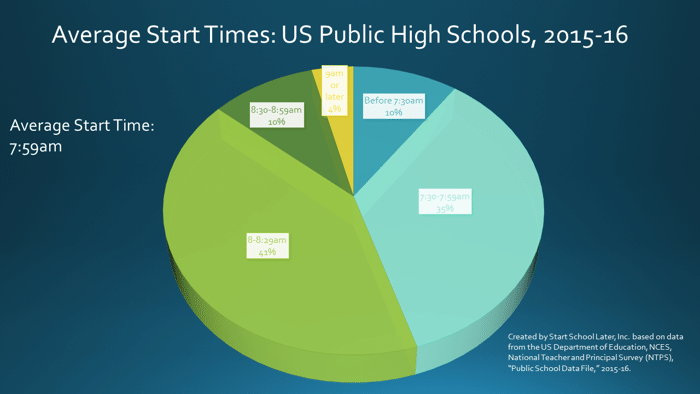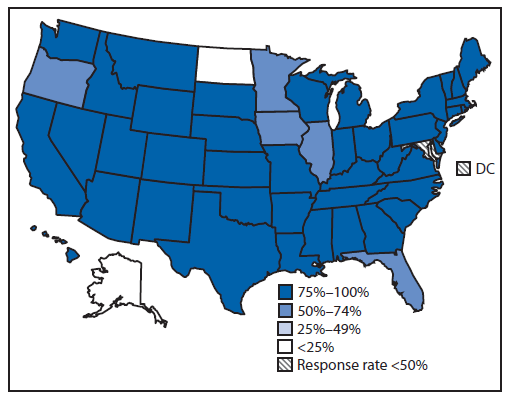
All of my high-school memories, even the best ones, are tinged with exhaustion: the full-body ache of dragging myself into bed at midnight at the end of a long day of school and homework, the terror of staring down traffic lights in the hope they’d change as I raced to arrive by our 7:10 a.m. start time. My friends and I talked incessantly about how tired we were, and our parents talked about it, too, but no one ever seemed to float the idea that we should be making a change. It was just the way things were.
Research has shown that early school start times (7:30 a.m., for example) don’t square with adolescents’ sleep needs, and that later ones have positive effects on mental and physical health, as well as academic performance. The Centers for Disease Control and Prevention have even urged policymakers to move toward later start times — scientists tend to recommend pushing the bell to 8:30 a.m. — for middle and high-school students. Still, many school districts have been mired in years-long debates over the issue.
Early start times first came about in the latter half of the 20th century, when suburban schools decided to stagger their schedules so that the same fleet of buses could serve all students, dropping off high-school students earliest. Urban schools then adopted those start-time hours, and extracurricular activities oriented themselves around this scheme, according to Terra Ziporyn, the executive director of the nonprofit Start School Later. Some policymakers have begun to rethink that custom: School districts in at least 21 states have later start times this year than they did last year with the intention of giving students more time to sleep, and schools in at least 45 states have delayed their start times in recent years. Lawmakers in California recently introduced a first-of-its-kind bill that would ban start times earlier than 8:30 a.m.; after failing to receive enough votes, it was shelved for next year.
Yet, according to federal data from the 2015-16 school year, over 85 percent of public high schools still start before 8:30 a.m. While few question the scientific evidence supporting later start times, many parents and administrators argue that starting school later isn’t the best solution to kids’ sleep-deprivation problems, citing practical concerns. They wonder what later school end times would mean for sports and after-school activities, for example, and how much additional money districts would have to spend on transportation. Because many districts stagger their transportation in order to use the same buses for all of their students, pushing back middle and high-school start times could mean paying for more buses.

But if later start times are indeed the remedy that many advocates tout it to be, why haven’t the arguments in its defense prompted widespread change? The sticking point may be much simpler, and much harder to overcome, than the practical concerns: It’s tough to fight against the allure of the status quo. In a peer-reviewed paper in the journal Sleep Health, a group of researchers and later start-time advocates uses tricks from the field of behavioral economics to tackle a complicated question: Why is it so hard for people to embrace change, and how can you convince someone that change is worth it?
“Why is it so hard for people to embrace change, and how can you convince someone that change is worth it?”
Behavioral economics pulls from disciplines such as social psychology, cognitive science, and economics to analyze why individuals make the choices they do — especially when these decisions run counter to fact or to an understanding of the benefits of the opposite choice. Susan Malone, a senior research scientist at the Rory Meyers College of Nursing at NYU, teamed up with the behavioral economist Alison Buttenheim and Ziporyn to apply this thinking to the school start-time debate.
The authors argue that it isn’t enough to simply offer scientific evidence of the advantages of later start times. Relying on the science, the paper states, “assumes that district officials and stakeholders engage in a rational decision-making process”; factors like “common biases” and “mental shortcuts” often get in the way. Behavioral economists have looked at other health issues, such as smoking and obesity, through the lens of these kinds of decision-making factors. A study on weight loss, for example, showed that behavioral-economics tricks like incentive systems with monetary rewards helped participants achieve their weight-loss goals.

A graphic depicting the percentage of public schools with early school start times (before 8:30 a.m.), by state, for the school year 2011-2012. (US Department of Education)
The paper’s first suggestion for advocates seeking to delay start times tries to poke at the staying power of the status quo. Initiatives are often most successful when they are the default option, or the option that requires no work on the part of the person making the choice. Take organ donations: In countries where donating is the default option and opting out requires active effort, donation-consent rates are higher than in countries where it isn’t the default option. For parents, the threat of change can be stressful in its own particular way. Ziporyn of Start Schools Later noted that she has seen parents show just as much apprehension about earlier school start times as they do about later ones, which she suggested means it’s mostly change that they’re afraid of. With this in mind, the authors recommend shifting the burden of defense from late start times to early start times. States and regions, for example, could require districts to submit evidence-based justifications of early start times on an annual basis, while districts with later start times wouldn’t have this requirement.
Casting later start times as the norm rather than an aberration would also help the advocates’ cause, according to the researchers, given that social pressure is a significant factor in human decision-making. When people see peers who are similar to them doing something, they are likely to imitate that action. One odd example: According to a study, hotel guests who are told that past guests staying in their specific room reused their towels are more likely to choose to reuse than those who are simply told that guests in the same hotel have done it. The authors suggest that people advocating for later start times in a given district find a school that did push the first bell back and put it in contact with a similar school that’s conflicted on the issue.
Since the paper is a set of suggestions, it does not provide findings, and without data it’s unclear whether these tools can indeed be applied to the school start-time debate. Those who oppose late start times may disagree with the study’s underlying premise and dismiss behavioral-economics tricks as ineffective in the face of what they see as clear logistical concerns. And a substantial number of anecdotes do support their concerns about delaying class; some students have said they have less time to complete their homework, for example, and some school districts have noted that students feel more rushed getting to sports games or other activities after a later last bell, while others have reported traffic and overcrowding on buses, which sometimes makes students late for school.
Asked about the practical arguments against later start times, Ziporyn pointed to the many districts that have successfully found solutions to the logistical challenges. “When schools change their hours, all of these things adapt accordingly,” she said. She noted that many schools that have moved their bell times still have students winning sports competitions and continue to see growing rates of extracurricular participation. Ziporyn also pointed to a recent RAND Corporation report predicting that later start times are economically beneficial in the long run; the report estimates that the decrease in fatal car accidents and increase in academic achievement as a result of later start times would lead to a stronger workforce and nationwide economic gains over the course of the next decade, and that immediate benefits could be seen in as soon as two years. Even those who complain about later start times tend to agree that solving the logistical challenges is possible — it’s just that the solutions take time, unified leadership, and often money, resources which can be difficult for some schools to come by.
Malone, the research scientist at NYU and one of the study’s authors, said that the authors knew they were embarking on something “new and different” when they decided to apply behavioral-economics principles to an issue of public policy, which often gets mired in bureaucracy and logistics, rather than a case of individual choice-making. It’s also possible that for some decision-makers, the choice doesn’t appear as one between what is beneficial and what is harmful; some might see it as a balancing of, say, health benefits with logistical benefits.
All in all, the authors’ hope is to “create a climate in which people want to change” — a climate that may be difficult to create just by talking to parents about the scientific evidence, Ziporyn said. “People don’t want to be told that they’re hurting their children,” she said. “It sounds like we’re telling people they’re bad parents. And that’s not the point. The point is, this is something you want to do.”
This story originally appeared on TheAtlantic.com.
More from The Atlantic: A Catfishing With a Happy Ending, Death at a Penn State Fraternity